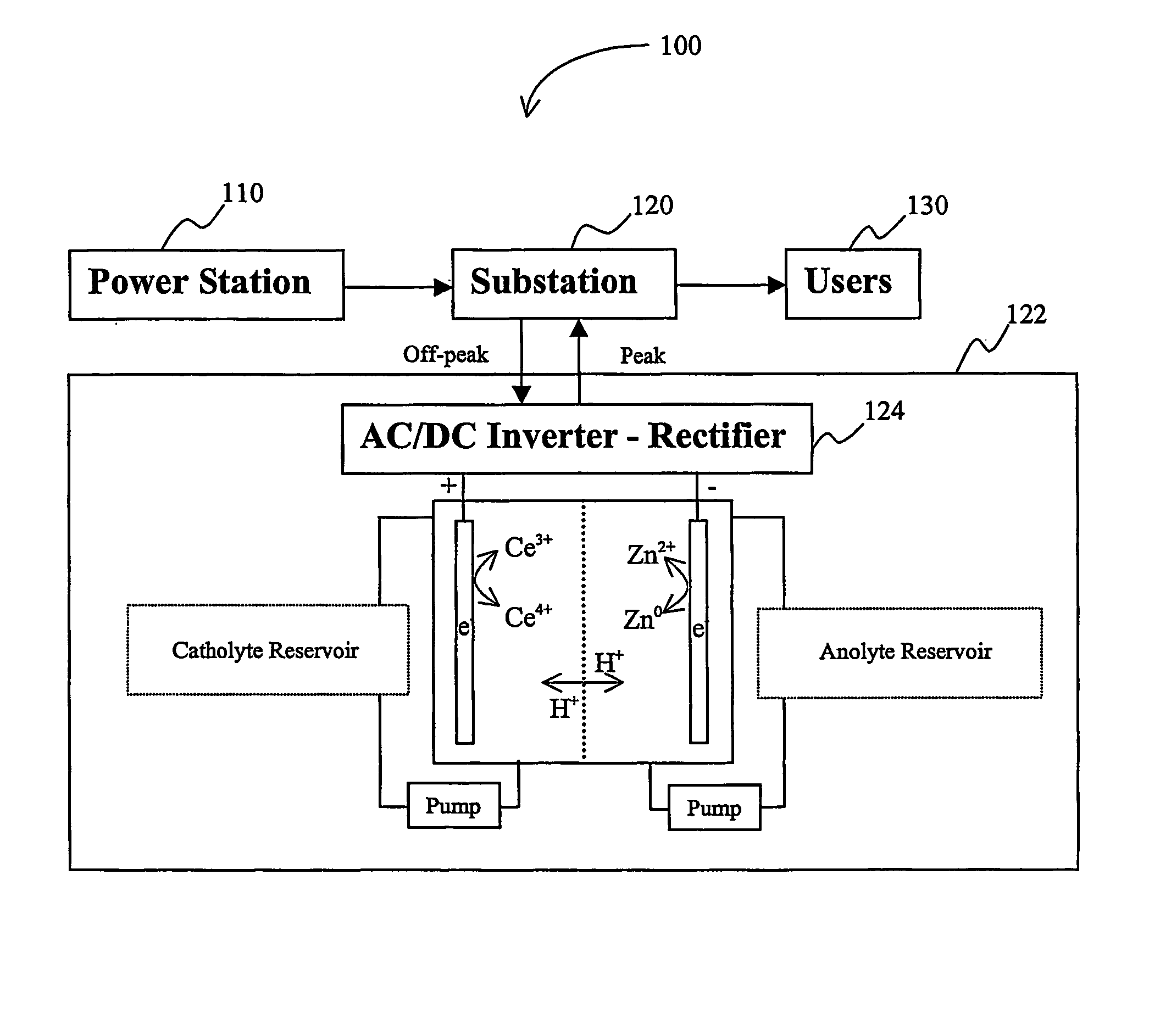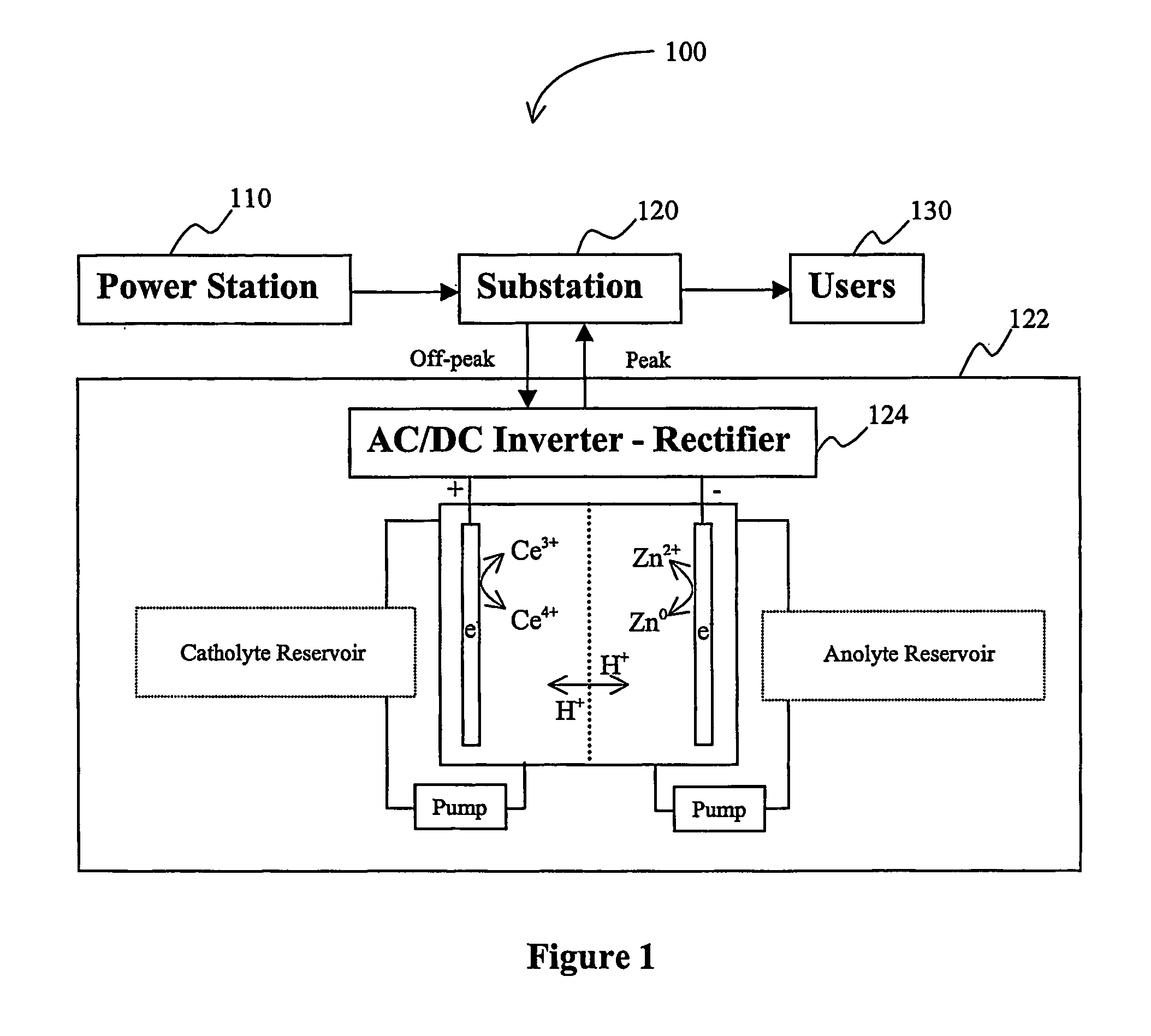Load leveling battery and methods therefor
a load leveling and battery technology, applied in the field of load leveling batteries, can solve the problems of zinc halogen batteries having a relatively long cycle time, significant increase in power density, and environmental pollution,
- Summary
- Abstract
- Description
- Claims
- Application Information
AI Technical Summary
Benefits of technology
Problems solved by technology
Method used
Image
Examples
Embodiment Construction
[0017]The inventors have discovered that a load leveling battery may be manufactured using a cerium-zinc redox pair. More particularly, the inventors contemplate that zinc in acid solution may be employed as the basis of such batteries when coupled with concentrated solution of ceric ions in an aqueous solution of an organic acid, and especially methane sulfonic acid.
[0018]Based on previous experiments (infra), such redox couples have an open circuit voltage of at least 2.4 volts, and more typically 2.46 volts, which is superior to numerous other redox couples. It is generally believed that in secondary batteries zinc needs to be dissolved into solution on discharge of the battery and replaced on the electrode during charging following the equation (I) below.
Charging: Zn0→2e−+Zn+2 Discharging Zn2++2e−→Zr0 (I)
Consequently, the inventors contemplate to employ an acid electrolyte for this transformation. Zinc, however, is known to form zinc dendrites from acid electrolytes, and zinc ...
PUM
| Property | Measurement | Unit |
|---|---|---|
| voltage | aaaaa | aaaaa |
| open circuit voltage | aaaaa | aaaaa |
| open circuit voltage | aaaaa | aaaaa |
Abstract
Description
Claims
Application Information
 Login to View More
Login to View More - R&D
- Intellectual Property
- Life Sciences
- Materials
- Tech Scout
- Unparalleled Data Quality
- Higher Quality Content
- 60% Fewer Hallucinations
Browse by: Latest US Patents, China's latest patents, Technical Efficacy Thesaurus, Application Domain, Technology Topic, Popular Technical Reports.
© 2025 PatSnap. All rights reserved.Legal|Privacy policy|Modern Slavery Act Transparency Statement|Sitemap|About US| Contact US: help@patsnap.com


